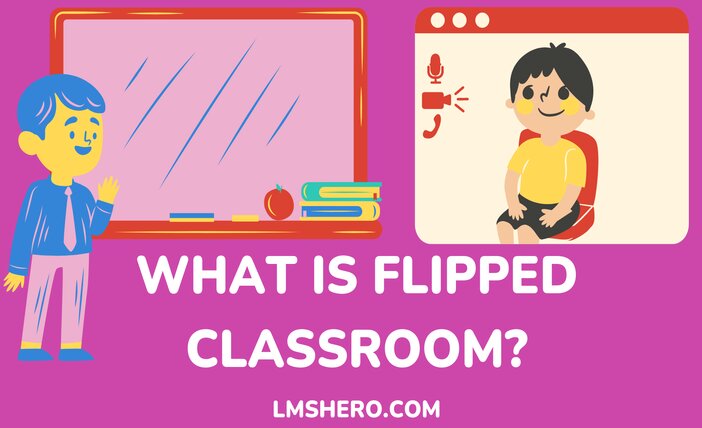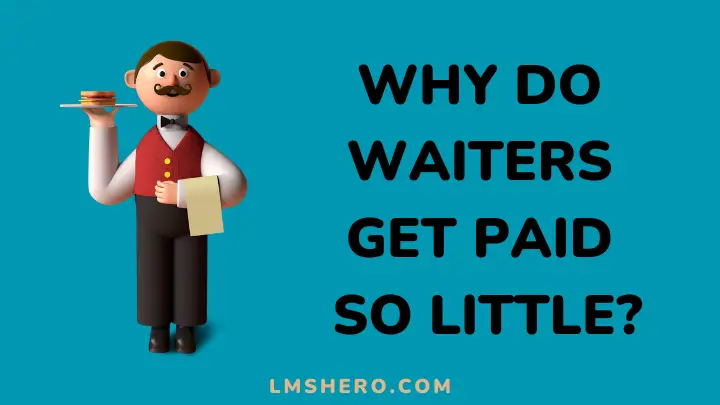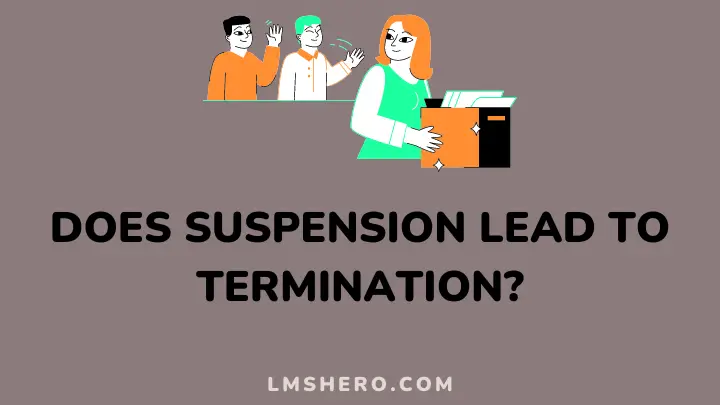A flipped classroom is a scenario whereby students are provided with materials and resources to study before a class.
In a flipped classroom, students first study new material through assigned reading or in the form of informative videos such as YouTube, and slideshows.
Class time is then dedicated to interactive activities which allow students to actively participate and engage with the teacher and with other students.
The flipped classroom model has been gaining popularity because it increases engagement with students, which leads to higher retention rates. And that’s why I have written this guide.
In this complete guide, I will show you all you need to know about this effective learning model and how to implement it.
What Is A Flipped Classroom?
Flip learning or flipped classroom is a teaching method that combines traditional ways of learning with modern technology. It uses videos, application software, and other digital resources to bring the lessons directly to students’ homes.
Teachers still need to guide students through these materials, but they can do so in less time because students watch lectures at their own pace.
A flipped classroom structure makes it easier for teachers to tailor their lessons to meet their student’s needs, but there are also many advantages for learners.
In a flipped classroom, teachers have more time to spend on hands-on activities like assessments and personal attention to struggling or inefficient students.
How Do Flipped Classes Work?
A flipped classroom flips class lectures and homework assignments around. In a traditional model, students learn through lectures/classes at school and then do the homework at home.
A flipped classroom keeps the lecture/class in place but moves the homework to before school or after school.
During class time, teachers can focus on projects and activities that are traditionally done during homework time.
Outside of class, students watch videos and other multimedia materials that explain concepts much as a teacher does during a lecture.
Then, in class, students work through what they watched, doing activities, participating in discussions, and asking the teacher questions to help them understand the concepts taught.
What are the Benefits of Flipped Classroom?
1. Students learn more and faster
The result of a flipped classroom is faster learning.
Students in flipped classrooms not only learned more but also learned it more quickly than they would have otherwise.
And this is not just because they are studying at home instead of partying; any time spent studying would have been as good or better than the same amount spent in class listening to lectures.
2. Improves student engagement
Students arrive prepared with questions and are actively participating in the learning process since they know they will be asked to engage with content prior to class.
Further, because the teacher is freed from lecturing, he or she can focus on addressing students’ questions and providing individualized assistance.
Finally, because students receive immediate feedback on their answers during class time, they can adjust their understanding of the material accordingly.
3. Save time on lecturing as well as lesson planning
Students learn more efficiently when they have time during the day to think about their schoolwork and come up with questions about it.
In addition, many teachers find that flipped classrooms give them a chance to get to know their students better.
By giving them more time outside of class for discussion and collaboration, teachers can see how each student learns best and give them personalized feedback accordingly.
4. Improves student understanding
One of the biggest benefits of flipping the classroom is that students have more time to ask questions and receive individualized instruction than in a traditional classroom setting.
With homework and classwork occurring in the classroom setting, teachers can make sure that students are understanding the material as opposed to simply “doing their homework.”
5. Allows students to learn at their own pace and at home
By shifting the focus from the instructor’s lecture to the student’s explorations and experiences, the flipped classroom maximizes learning time.
Students are more likely to retain key concepts and ideas when they have a chance to explore them on their own.
With this learning model, students can watch a video lecture or read an article at home, then practice and apply what they’ve learned in class. The teacher becomes a mentor rather than a lecturer.
How Can Teachers Effectively Flip A Classroom?
Tired of the same old lecture and homework routine? Tired of students coming to class without having done the reading? Well, it’s time to flip your classroom.
Below are the basic steps to effectively flip your class:
1. Sensitize students and parents
To have a successful flipped classroom, you need to educate your students and their parents on what a flipped classroom is, and why you want to adopt the flip method.
Flipping your classroom will be hard work, especially in changing the mindset of students and parents. Have in mind that you will have to address concerns, and revisit the “how” and “why” often.
2. Use the necessary tools
Flipped method of teaching relies on technology to prepare teaching materials like videos, graphic designs, and audio.
To implement it, you need the necessary tools that will best cater to your recordings, editing, and sharing of the learning resources.
You may need a video hosting service or platform to fine-tune how students access all the learning resources.
Additionally, you will want to choose a suitable Learning Management System (LMS) to keep track of classroom progress and also keep everything simplified in one place. It is good to be organized and well-prepared to have a hitch-free flipped classroom.
3. Be creative and entertaining
When you start creating content for learning, keep it short and sweet. You’ll be surprised to learn that what used to take a longer period to cover in a traditional four-wall classroom can usually fit into a short video.
This is so because you won’t have to worry about classroom management. Don’t be afraid to be entertaining.
When you are entertaining, students won’t be bored while watching or listening to any of your created content.
You can also make use of quality videos and other interactive learning materials from open educational resources (OER) providers like Khan Academy.
4. Make students accountable
Students’ accountability is important to keep flipped learning classrooms floating. Students need to be actively participating in the at-home learning otherwise the whole learning process won’t yield desirable results.
Prepare a device that will hold students accountable and track their progress while watching your videos or listening to audio.
You can attach short quizzes at strategic places in the videos to know students who did their homework, and who didn’t, and also identify those who need help.
5. Manage your schedule effectively
Teachers must be able to create their schedules to make their day-to-day routine smooth and well-prepared.
Having to record, create lesson plans, respond to questions and make assessments can be a great deal of work if not well scheduled.
Understand your routine and manage the entire system effectively to have a functional educative flipped classroom.
Creating Lessons For Your Flipped Classroom
The first step toward creating your lesson is deciding on which Learning Management System you would like to sign up with.
LMS allows you to easily prepare lessons, create quizzes, and have students join from the comfort of their homes.
By creating your lesson, you will be able to more effectively communicate with your students and tailor the coursework to better meet their needs.
With an LMS, you can create a high-quality lesson that is engaging for you and your students.
There are many “free LMSs” to choose from, but below are some that would help you with creating an enhanced flipped classroom experience.
1. Google Classroom
Google Classroom is an online learning environment where teachers can quickly, safely, and effectively create lessons, offer comments, and manage students.
It’s great for accessing content from numerous places, and it’s especially useful for teachers who have students that are always on the move.
Google Classroom is renowned as Google’s learning management system. It facilitates teaching and learning by simplifying tasks, increasing cooperation, and encouraging communication.
2. Edmodo
Edmodo is one of the most widely used educational tools of our time.
The Edmodo interface is user-friendly, and it offers unlimited storage options. It can be used in flipped classroom environments to make teaching easier by allowing teachers to focus on their students instead of paperwork.
Edmodo integrates with Microsoft Office and Google Apps for Education.
The Edmodo mobile app also has functionality for parents which will help the parent keep track of their kid’s progress.
3. Moodle
This flipped classroom platform would allow the instructor to upload video lessons including the ones which have been shared by other teachers on Moodle.
It comes with loads of content formats such as videos, animated graphics, and even documents. And you can load content about the module and divide it according to the topics.
Traditional Classroom vs. Flipped Classroom
The traditional model of classroom instruction is based on the idea that teachers transmit knowledge to a group of students.
The teacher, as the expert, knows what the students need to learn and how best to teach it. Students listen passively, take notes and then prepare for exams by studying their notes.
However, in the modern world, this instructional model is inadequate for many subjects, particularly those where students must be able to analyze complex information, solve problems and work collaboratively.
These subjects are becoming more important as technology disrupts job markets and innovations such as big data analysis become more common in every industry.
The flipped classroom reverses the traditional model of education by shifting lectures from class time to home time and having students “learn” material outside of class through videos or readings on their own time, leaving class time available for activities such as problem-solving and discussions which require active learning.
Disadvantages of Flipped Classrooms
As much as the flipped classroom model has lots of benefits, it has limitations, some
of which are highlighted below:
1. It can create a digital divide
In flipped classrooms, students are required to have access to a computer system equipped with internet services for them to be able to access learning materials.
This requirement is hard on students who are from low-income families and already have limited access to resources.
2. It increases the workload
Responsibilities like creating, tapping, editing, and uploading lecture materials take time and also require specialized skill sets.
Teachers are faced with the challenge of introducing classroom activities that will improve subject matters and also encourage students to participate and prepare for classes.
3. It increases screen-time
Students have to spend more time in front of the computer watching lectures and thereby increasing the potential of causing serious problems in areas like the student’s learning process, mental health, and person-to-person relationships.
The flipped classroom approach may be new and more effort-demanding. Nevertheless, is a necessary means required to improve the delivery of quality education.
FAQs
Is it easy to flip a classroom?
Flipping classrooms isn’t something difficult. However, teachers must have access to the necessary tools and technology. Because the effectiveness of it depends on the tools and materials available.
Is a flipped classroom really effective?
A flipped classroom is an effective learning method because it uses a student-centered teaching model.
This is to ensure that the aim is to contribute to the student’s overall success in obtaining a proper, effective education.
Conclusion
The flipped classroom works best for all levels of education from grade school to college. It is effective because it gives the student more time to work with the teacher on a personal basis and get additional help with their work when needed.
It helps teachers be able to focus on each individual student and see exactly where they are struggling. And it frees up more time to get assignments completed during class instead of at home.
Therefore, students are able to complete them completely and ask questions when needed instead of later at home when parents might not understand exactly what the assignment is asking.
To help you implement flipped classrooms, here are digital education tools for teachers and students you should take a look at.
Also, I have written a comprehensive guide on Mastery Learning, Differentiated Learning, Discovery Learning, and Insight Learning model. You may want to check them out as well.
I hope you found this article helpful.
Thank you for reading.






